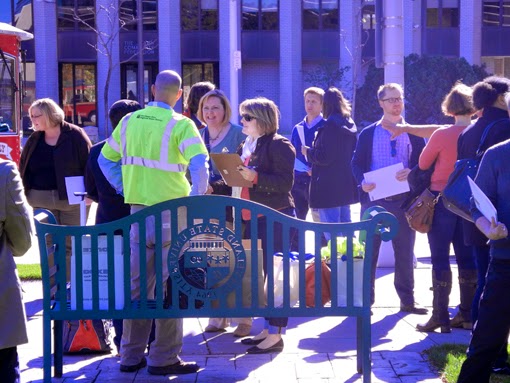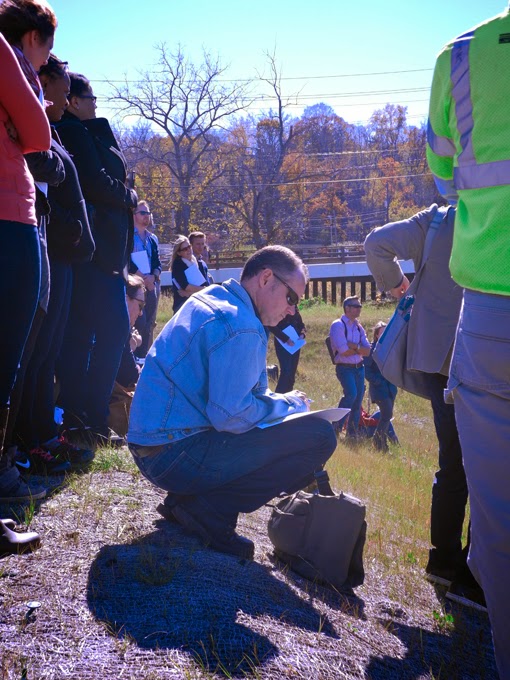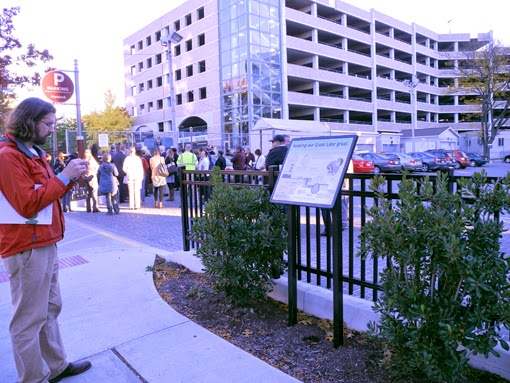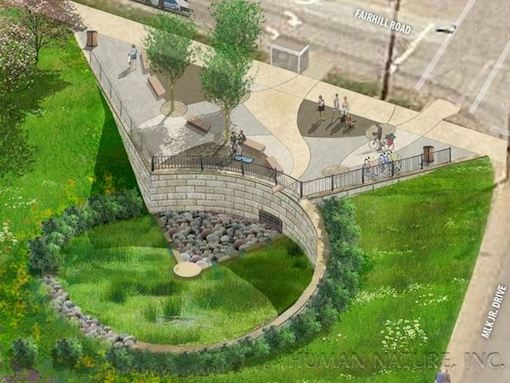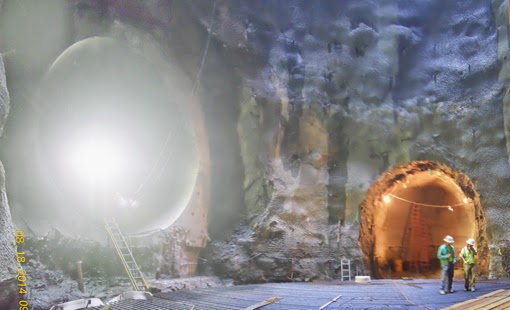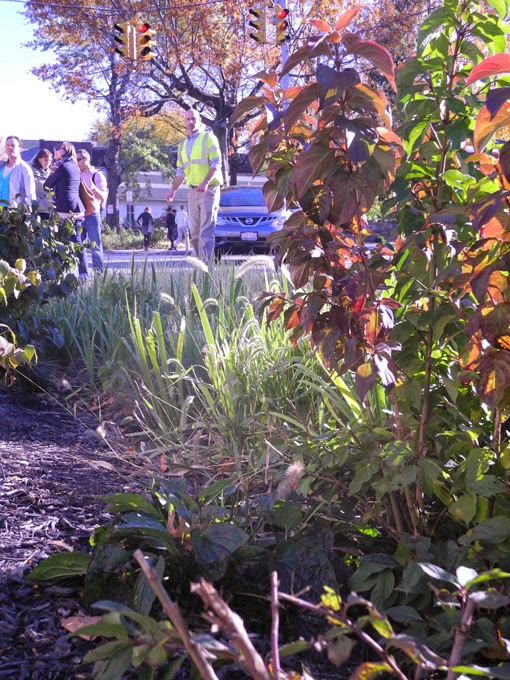
LOOK: See green infrastructure plans taking root in Cleveland neighborhoods
Posted by Jared Shepherd
- 4866 Views
- October 28th, 2014
- in Miscellaneous
- No Comments
Visitors from across the country toured six green-infrastructure pilot projects across Cleveland this week as part of the second annual Green Infrastructure Summit held at Cleveland State University.
These sites featured a combination of small-scale demonstrations, green-infrastructure—components of Project Clean Lake to help reduce flow volumes in our combined-sewer area—and water resource restoration projects.
“These green infrastructure projects are being constructed in advance of many of our tunnel projects planned under Project Clean Lake,” said Director of Engineering & Construction Kellie Rotunno. “These GI projects will reduce CSO flows long before the tunnel systems are complete and will lead the way to additional GI opportunities in the future.”
Upon completion, these projects will address a variety of concerns, such as reducing the volume of water entering the local sewer system, filtering pollutants from infiltrated groundwater, or mitigating flooding and erosion problems.
Photos by Yolanda Kelly, Northeast Ohio Regional Sewer District
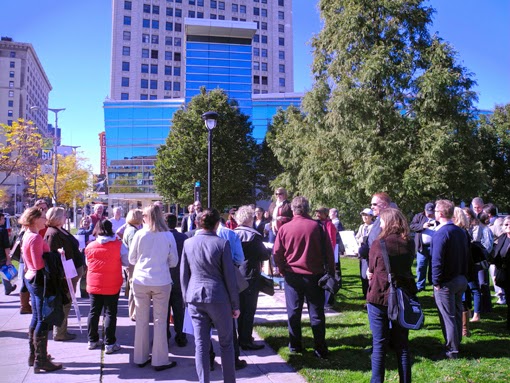 |
| Green Infrastructure Summit attendees await the tour bus at Cleveland State University October 26. |
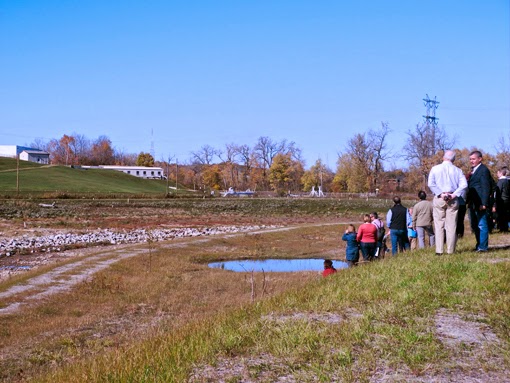 |
| Known as the West Creek Confluence, this WRRSP project featured stream and floodplain restoration to mitigate flooding and erosion concerns along West Creek. The project eliminated nearly seven acres of impervious surface. |
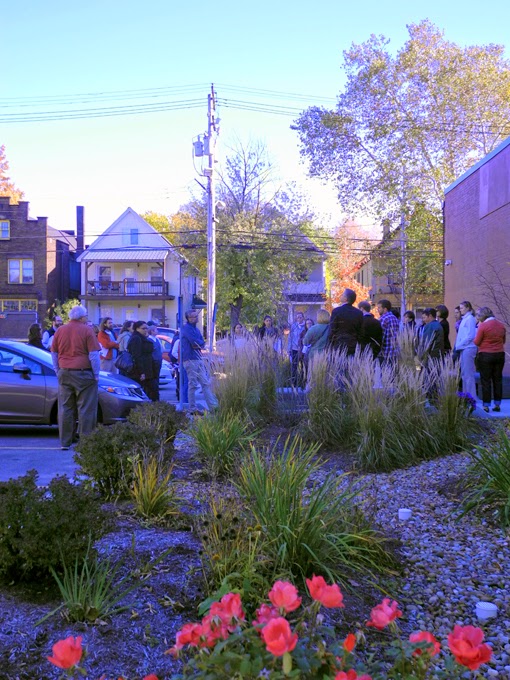 |
| Cleveland Public Library, Jefferson Branch Parking Lot Bioretention Area |
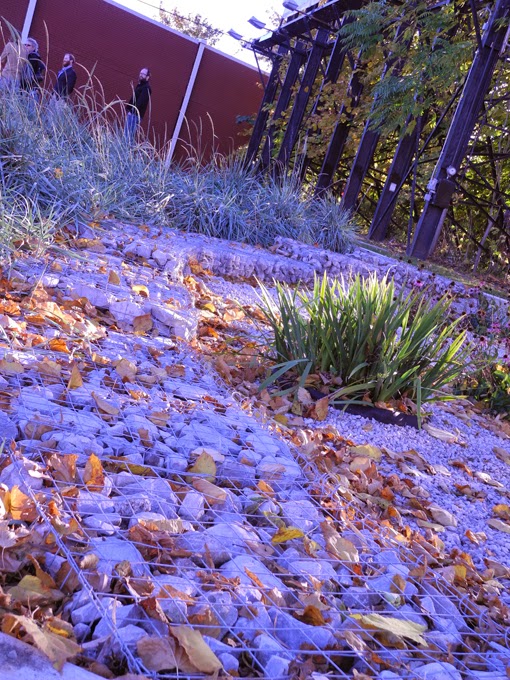 |
| Waterloo Neighborhood Outdoor Theater Parking Lot Bioretention area |
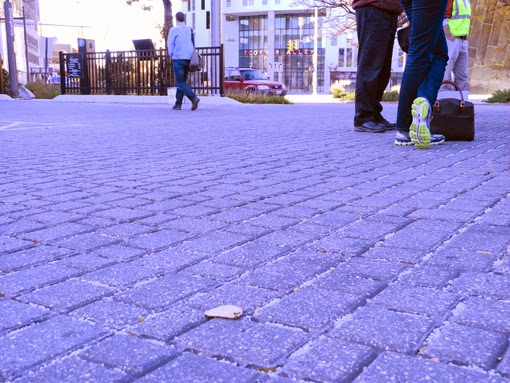 |
| Pervious pavers cover the top of a stone-layered base of sandy soil under a Marriott Hotel parking lot in University Circle. The site conditions and drainage system help keep more than 1 million gallons of stormwater out of the combined sewer system every year. |
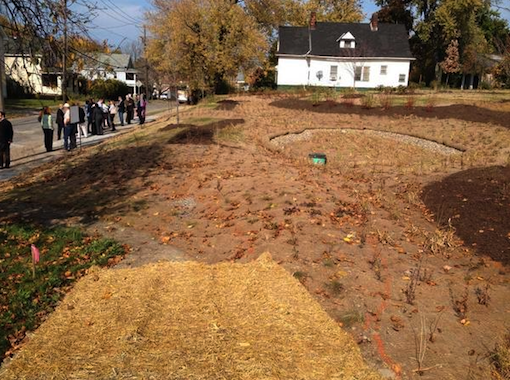 |
| A bioretention area in Slavic Village will help control 200,000 gallons of stormwater per year, filtering the flow rather than allowing it to enter the combined sewer system. |

